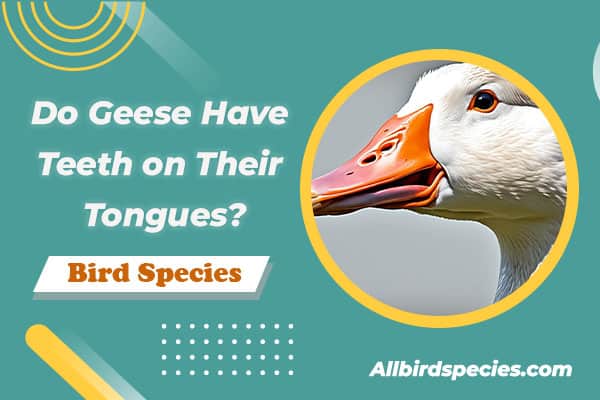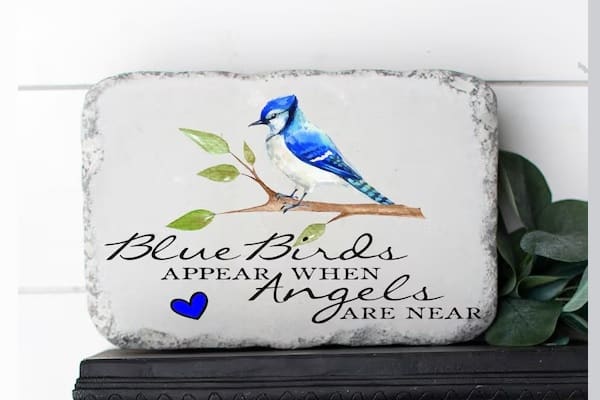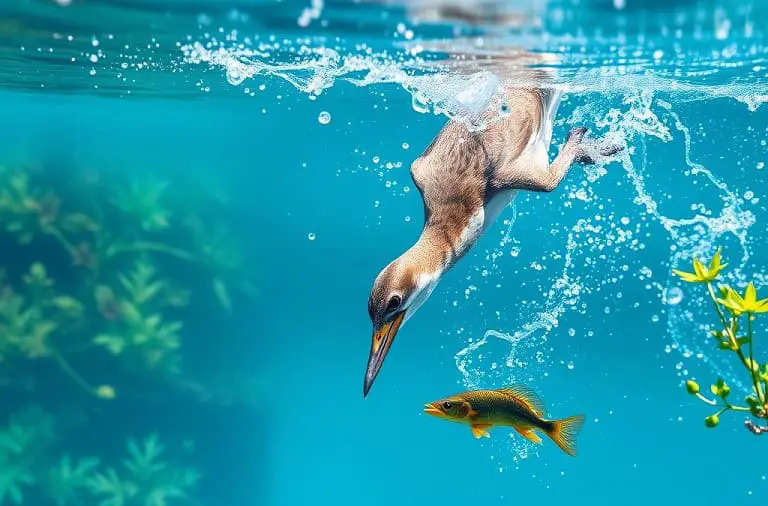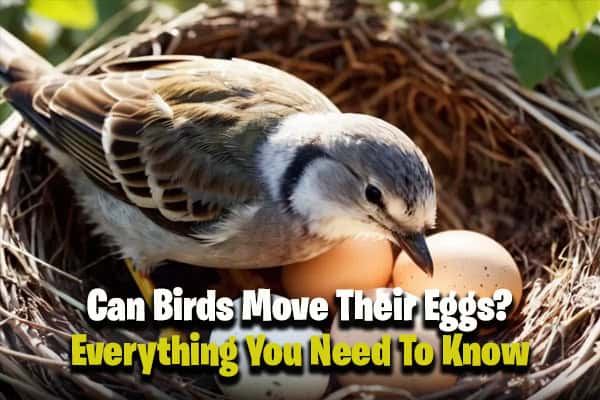Identifying Hummingbird Nests: All You Need To Know
Hummingbird nests are amazing feats of engineering. These tiny birds create cozy homes with natural materials and their own saliva. In this guide, I will show you how to spot hummingbird nests in the wild, what they look like, and how they are built. You will also learn about the nesting habits and life cycle of these incredible creatures. Join me as we enter the magical world of hummingbird nests
Key Takeaways:
- Hummingbird nests are marvels of engineering, constructed using a variety of materials such as spider silk, lichen, and moss.
- Spotting a hummingbird nest in the wild can be a thrilling experience, and we will show you how to identify their unique features.
- Learn about the different stages of nest building, incubation, and the lifecycle of hummingbird nests.
- Discover how to attract hummingbirds to your yard by creating a hummingbird-friendly environment with feeders and nesting sites.
- Understand the impact of environmental factors on hummingbird nests and the importance of preservation.
The Fascinating Construction of Hummingbird Nests
Hummingbird nests are truly remarkable creations. These tiny birds intricately build their nests using a variety of materials, resulting in structures that are both functional and aesthetically pleasing. Let’s take a closer look at the fascinating construction of hummingbird nests.
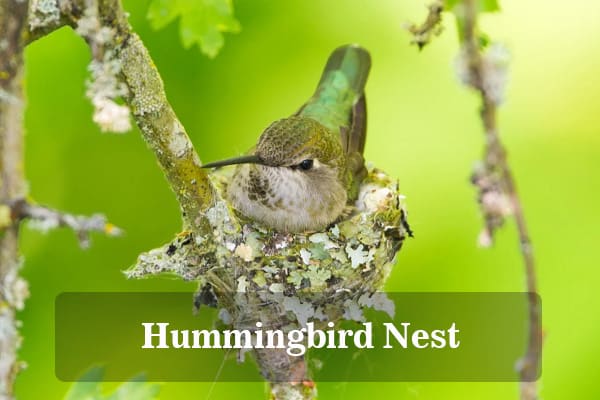
Materials Used
Hummingbirds gather a diverse array of materials to build their nests. These include spider silk, lichen, moss, and twigs. The combination of these materials results in a sturdy and insulated nest that protects the eggs and hatchlings from the elements.
Unique Shape and Size
Hummingbird nests are often cup-shaped, providing a secure and snug space for the eggs. They are relatively small in size, measuring around 1.5 to 2 inches in diameter, perfect for the brood of a mother allen’s hummingbird. These compact nests allow the mother hummingbird to easily protect and maintain the eggs.
Hummingbird nests are marvels of engineering, showcasing the incredible ingenuity and resourcefulness of these tiny birds and their tenacity over days building the nest. The construction process and the final product are truly awe-inspiring.
Comparison to Other Bird Nests
Compared to nests built by other bird species, hummingbird nests stand out due to their unique materials and structures. While some birds rely on twigs and leaves, hummingbirds incorporate delicate materials like spider silk and lichen to strengthen and camouflage their nests.
| Nest Construction | Materials Used | |
|---|---|---|
| Hummingbird Nests | Intricate and cup-shaped | Spider silk, lichen, moss, twigs |
| Other Bird Nests | Varied shapes and sizes | Twigs, leaves, grass, feathers |
The unique construction of hummingbird nests sets them apart and showcases the incredible adaptability of these remarkable birds. Their ability to utilize diverse materials such as spider silk and lichen demonstrates their resourcefulness.
Identifying Hummingbird Nests in Nature
Spotting a hummingbird nest in the wild can be a thrilling experience. These tiny birds create small, bowl-shaped nests that blend seamlessly into their natural surroundings. To help you recognize these remarkable structures, take a look at some stunning photos of hummingbird nests:
“Hummingbird nests are true masterpieces of nature. The delicate construction and intricate details make them a sight to behold.” – Nature enthusiast
Hummingbird nests can be found in a variety of locations, including trees, shrubs, and even human-made structures. These nests are usually hidden away to protect them from predators and provide a safe haven for the growing chicks.
When searching for a hummingbird nest, keep in mind their distinct characteristics. They are typically small, measuring only a few inches in diameter, making it challenging to spot them from a distance. The nests are carefully woven with plant materials and spider silk, creating a sturdy yet comfortable home for the nesting hummingbirds.
To help you in your quest to find a hummingbird nest, familiarize yourself with the species that are known for building nests. One such species is the rufous hummingbird, which is commonly found in the western United States. They are known for their vibrant orange coloration and exceptional nesting abilities.
It’s essential to remember that disturbing a hummingbird nest is not advisable, as it can cause unnecessary stress to the birds and potentially harm the fragile eggs or chicks. Instead, enjoy observing the nest from a distance and marvel at the incredible work of these remarkable creatures.
| Nest Features | Hummingbird Species |
|---|---|
| Small and bowl-shaped | All hummingbird species |
| Constructed from plant materials and spider silk | All hummingbird species |
| Hidden within trees, shrubs, and other foliage | All hummingbird species |
| Rufous coloring | Rufous hummingbird |
Must Read About Mythical Birds and Creatures
Understanding Hummingbird Nesting Behavior
Hummingbirds, known for their vibrant colors and fast-paced flights, have equally fascinating nesting behaviors. These small birds exhibit unique nesting habits that are worth exploring.
Nesting in Unlikely Places
Hummingbirds sometimes build their nests in very unlikely places, surprising both bird enthusiasts and researchers alike. While most bird species build nests on trees or in bushes, hummingbirds are known to create their nests in various unconventional locations. From low-hanging branches to clotheslines, these tiny creatures demonstrate remarkable adaptability when it comes to finding a suitable spot for their nest.
Attracting Hummingbirds
If you’re interested in attracting hummingbirds to your yard, creating a welcoming environment is essential. These birds typically build their nests before mating, so providing the right conditions can encourage them to nest nearby. Planting a variety of nectar-rich flowers, setting up hummingbird feeders, and offering nesting material like soft fibers or small twigs can make your yard an attractive nesting site for these beautiful creatures.
Nest Building and Incubation
Hummingbirds are meticulous nest builders, often incorporating a variety of materials into their nests. Spider silk, lichen, and moss are commonly used to construct the intricate structures. Female hummingbirds spend several days carefully weaving these materials together to create a small and sturdy nest.
After the nest is complete, the female hummingbird lays her eggs and takes on the responsibility of incubation. This process usually takes about two weeks, during which the female tirelessly sits on the eggs, providing warmth and protection. The male hummingbird may occasionally assist in incubation or guard the nest from potential threats.
Encouraging Nesting in Your Yard
If you wish to encourage hummingbirds to nest in your yard, there are a few steps you can take. Providing a safe and sheltered environment, away from predators and extreme weather conditions, is crucial. Tall leafy trees or dense shrubbery can serve as ideal nesting sites. Offering a water source, such as a shallow birdbath, can also attract these birds and provide them with the necessary hydration for successful nesting.
| Key Points | Hummingbird Nesting Behavior |
|---|---|
| Hummingbird nest frequency | 2-8 times |
| Common nesting material | Spider silk, lichen, and moss |
| Unlikely nesting places | Hummingbirds sometimes build their nests in unconventional locations |
| Attracting hummingbirds to nest nearby | Create a welcoming environment with nectar-rich flowers and proper nesting materials |
| Nest-building and incubation | Female hummingbirds build their nests before mating and incubate the eggs |
The Lifecycle of Hummingbird Nests
Witness the extraordinary journey of a hummingbird nest, from its inception by a nurturing female hummingbird to the growth and independence of its precious chicks. Discover the remarkable stages of this lifecycle as we delve into the captivating world of these magnificent birds.
1. Nest Building by the Female Hummingbird
Every hummingbird nest begins with the remarkable efforts of a female hummingbird. She meticulously constructs the nest using delicate materials, including spider silk, lichen, and moss. The nest is a true testament to her dedication as she weaves it together with precision and care, an act of love by the mother allen’s hummingbird for her brood.
“The female Allen’s hummingbird tirelessly builds her nest, using spider silk to reinforce the structure and moss to line it. It’s a labor of love and dedication.”
2. The Laying of Hummingbird Eggs
Once the nest is complete, the female hummingbird will lay her eggs, typically two in number. These tiny eggs are no larger than a pea and are carefully incubated by the mother. The eggs are a testament to the potential new life that lies within the nest.
- Hummingbird eggs are a wonder to behold, showcasing their distinct white color and minute size.
3. Nesting and Incubation
During the incubation period, the mother hummingbird dutifully tends to her eggs, ensuring they stay warm and protected from external elements. She diligently incubates the eggs for about 14 to 23 days, providing the necessary warmth to support their development.
4. Hatching of the Chicks
After the incubation period, the eggs hatch into tiny, featherless chicks. The mother hummingbird’s nurturing instincts kick into high gear as she feeds her chicks a diet rich in nectar and insects. The chicks grow rapidly under her care, developing their characteristic plumage and strengthening their wings.
“The fledgling chicks are a wondrous sight, their tiny bodies eagerly awaiting their next feeding as their mother diligently tends to their needs.”
5. Fledging and Leaving the Nest
As the chicks continue to grow and develop, their wings gain strength, and they eagerly venture outside the nest. This stage is known as fledging, which is a thrilling milestone in their journey towards independence. Gradually, the young hummingbirds become proficient flyers, ready to explore the world around them.
- Once the fledglings leave the nest, they embark on exciting adventures, embracing their newfound freedom and beginning their own remarkable journeys.
| Stage | Highlights |
|---|---|
| Nest Building | Female hummingbirds construct intricate nests using spider silk, lichen, and moss. |
| Laying of Eggs: A crucial stage in the life cycle of mother allen’s hummingbird. | Eggs, typically two in number, are carefully incubated by the mother hummingbird. |
| Incubation | The mother hummingbird provides warmth for the eggs during the incubation period that lasts for 14-23 days. |
| Hatching of Chicks | Featherless chicks emerge from the eggs and are diligently nurtured and fed by their mother. |
| Fledging and Independence | The young hummingbirds leave the nest, develop their flying abilities, and explore the world on their own. |
Creating Hummingbird-Friendly Environments
Create a welcoming environment in your yard to attract beautiful hummingbirds. By providing the right resources and habitat, you can turn your outdoor space into a hummingbird haven. From feeders to sheltered trees, here are some tips to make your yard attractive to these tiny, vibrant birds.
1. Hummingbird Feeders
Hummingbird feeders are essential for attracting these magical creatures, especially during the days building their nest. Choose a feeder that is easy to clean and refill, and opt for one with vibrant red or orange colors to catch their attention. Place the feeder in a quiet and easily accessible location, away from potential predators.
2. Vegetation for Nesting
Hummingbirds need suitable nesting sites to build their nests and raise their young. Planting a variety of trees and shrubs in your yard will provide them with the necessary shelter and materials. Consider adding nest boxes or hanging baskets to create additional nesting opportunities.
3. Sheltered Trees and Shrubbery
Hummingbirds prefer nesting in trees and shrubs that provide cover and protection. Choose trees and shrubs with dense foliage, such as evergreens or leafy trees, to create safe nesting areas. Avoid using pesticides or chemicals that may harm hummingbirds or their nesting sites.
4. Water Sources
Hummingbirds need water for drinking and bathing. Place shallow dishes or birdbaths with clean, fresh water in your yard. Adding floating objects, like leaves or small rocks, will provide perching spots for hummingbirds while they enjoy a drink or a refreshing bath.
5. Create a Natural Habitat
Design your yard to mimic the natural habitat of hummingbirds. Incorporate a mix of flowering plants that attract nectar-loving insects, which serve as a vital food source for hummingbirds. Native plants like honeysuckle are ideal, as they provide familiar food sources and support local ecosystems.
“Hummingbirds are not just attracted to feeders; they are also drawn to yards that provide a safe and natural environment.” – The Hummingbird Society
By following these tips, you can make your yard a haven for hummingbirds. Provide them with the resources they need, and watch as they grace your outdoor space with their vibrant colors and playful flight.
Environmental Considerations for Hummingbird Nests
When it comes to hummingbird nests, environmental factors play a crucial role. These tiny birds have specific preferences in terms of species diversity and climate that directly impact their nesting habits. Let’s explore some key considerations that contribute to the success of hummingbird nests, including the building of the nest by hummingbird females.
Migratory Patterns of Hummingbird Species
Hummingbirds are known for their remarkable ability to migrate over long distances. Understanding their migratory patterns is essential in determining the appropriate time to observe nesting behavior. Different species of hummingbirds migrate during specific seasons, so it’s important to be aware of their schedules to increase the chances of spotting their nests.
Preferred Nesting Season
The nesting season for hummingbirds varies depending on the species and geographical location, impacting when hummingbird females lay eggs. Generally, the nesting season falls within the warmer months when food sources are abundant. By knowing the specific nesting season for the hummingbird species in your area, you can plan your observations and increase the likelihood of witnessing the nesting process.
Tree or Shrub Preferences
Hummingbirds are selective when it comes to choosing the perfect tree or shrub for their nests. They prefer locations that provide ample protection from predators and the elements. While different species have varying preferences, certain tree and shrub types are commonly favored by hummingbirds for their nesting sites.
| Hummingbird Species | Preferred Tree or Shrub |
|---|---|
| Ruby-throated Hummingbird | Eastern Redbud (Cercis canadensis) |
| Anna’s Hummingbird | Bottlebrush (Callistemon spp.) |
| Black-chinned Hummingbird | Desert Hackberry (Celtis pallida) |
These are just a few examples of the hummingbird species and their preferred trees or shrubs. Knowing which species frequent your area can help you select the right vegetation to attract and support their nesting needs.
The Role of Deciduous Trees
Deciduous trees can play a crucial role in providing suitable nesting habitats for hummingbirds. Their leafy canopies provide shade and protection during the nesting season, creating a favorable environment for these delicate birds. By preserving and planting deciduous trees in your area, you can foster an ideal nesting environment for hummingbirds.
By understanding the environmental considerations that impact hummingbird nests, you can better appreciate and support these remarkable birds. Whether it’s aligning your observations with migration patterns, identifying the right nesting season, or creating a hummingbird-friendly habitat, every effort counts in ensuring the thriving success of these tiny nests.
Nest Maintenance and Protection
Hummingbirds are meticulous nest builders and their nesting habits require a certain degree of maintenance and protection to ensure the safety of the mother allen’s hummingbird and her brood. Understanding how to care for their nests is essential to ensure the safety and well-being of these tiny birds.
Distinguishing Between New and Old Nests
When observing hummingbird nests, it’s important to be able to identify whether a nest is new or old. New nests are typically smaller and more pristine in appearance, while old nests may show signs of wear and tear. By distinguishing between new and old nests, you can gain valuable insights into the nesting habits of hummingbirds.
“By distinguishing between new and old nests, you can gain valuable insights into the nesting habits of hummingbirds.”
Providing Suitable Nesting Spots
Creating suitable nesting spots can help attract hummingbirds to your yard and provide them with a safe and secure environment to build their nests. Consider planting trees, shrubs, and honeysuckle that offer shelter and protection, such as leafy trees and dense shrubbery. Providing a variety of nesting spots will increase the chances of hummingbirds finding a suitable location to build their nests.
“Consider planting trees and shrubs that offer shelter and protection, such as leafy trees and dense shrubbery.”
Choosing Nesting Locations
Hummingbirds are selective when it comes to choosing nesting locations. They prefer spots that are well-concealed and offer protection from predators. Look for areas with dense foliage or structures that provide cover, such as tall grasses or hanging baskets. These locations mimic the natural nesting spots hummingbirds seek in the wild.
“Look for areas with dense foliage or structures that provide cover, such as tall grasses or hanging baskets.”
Building and Protecting the Nest
Hummingbirds will build their nests using a combination of materials like spider silk, lichen, and moss. It’s important to avoid interfering with the nest-building process to ensure the birds’ safety and natural behavior. Once the nest is complete, take steps to protect it from potential threats, such as predators or severe weather conditions.
“Once the nest is complete, take steps to protect it from potential threats, such as predators or severe weather conditions.”
By understanding the nesting habits of hummingbirds and providing them with suitable nesting spots, you can help support their population and contribute to their conservation efforts. Ensure the safety and well-being of these remarkable birds by respecting their nests and taking necessary steps to protect them.
| Nest Maintenance and Protection Tips |
|---|
| 1. Distinguish between new and old nests to gain insights into nesting habits. |
| 2. Provide suitable nesting spots with trees, shrubs, and dense foliage. |
| 3. Choose nesting locations that mimic natural hiding spots. |
| 4. Respect the nest-building process and avoid interfering. |
| 5. Protect nests from potential threats like predators and severe weather to safeguard the days building the nest and the development of the brood. |
The Unique Charm of Hummingbird Nests
Delve into the enchanting world of hummingbird nests and discover their unique charm. These tiny, intricately constructed nests are a wonder to behold and demonstrate the incredible dedication of female hummingbirds in building a safe and cozy home for their young. Let’s explore the fascinating details of hummingbird nests and their undeniable charm.
The Shape and Size of Hummingbird Nests
Hummingbird nests come in a variety of shapes and sizes. While the exact dimensions can vary between species, most nests are roughly the size of a golf ball or walnut shell. The nests are often cup-shaped, with a deep central depression to cradle the eggs and provide a secure nesting spot. The small size and delicate construction of these nests add to their unique charm, showcasing the remarkable ingenuity of these tiny birds.
The Dedication of Female Hummingbirds
Building a nest is no easy task for a female hummingbird. She must carefully select the perfect location, gather various materials, and intricately weave them together to form a strong and sturdy structure. The female hummingbird might spend up to seven days tirelessly building her nest, often using spider silk, moss, lichen, and even bits of fluff or string from a Christmas tree to create her masterpiece. This incredible dedication and attention to detail highlight the remarkable nature of these nests.
Various Nesting Techniques
Different hummingbird species employ various nesting techniques, resulting in a wide range of nest designs and locations. Some may build their nests on slender branches, while others weave them into the fork of a tree or attach them to leaves. Some hummingbirds even nest in unlikely places, such as underneath eaves or atop string lights. The diversity of nesting techniques showcases the adaptability and resourcefulness of these remarkable birds.
The Fascination of Baby Hummingbirds
One of the most captivating aspects of hummingbird nests is the sight of baby hummingbirds. Once the female lays two eggs inside the nest, she diligently incubates them until they hatch. The baby hummingbirds, known as chicks or fledglings, are born blind, featherless, and utterly dependent on their mother for nourishment and protection. Witnessing the growth and development of these tiny creatures adds to the overall charm and wonder of hummingbird nests and the brood they contain.
Spending time observing and appreciating hummingbird nests is a truly rewarding experience. The unique shapes and sizes, combined with the incredible dedication of female hummingbirds and the fascinating sight of baby hummingbirds, make these nests a true marvel of nature. Whether you are lucky enough to spot a hummingbird nest in your own backyard or simply admire them from afar, the charm and beauty of hummingbird nests are sure to leave a lasting impression.
FAQs
Q1: What is the size of a hummingbird house?
Hummingbird houses vary in size but typically range from 4 to 6 inches in height and width.
Q2: How does a bird build a nest?
Birds build nests using a variety of materials such as twigs, grass, leaves, and mud. They weave these materials together to create a sturdy structure.
Q3: Where do hummingbirds nest in Ontario?
Hummingbirds in Ontario typically nest in sheltered locations such as trees, shrubs, or vines, often near a water source.
Q4: What does a hummingbird symbolize?
Hummingbirds symbolize joy, playfulness, and adaptability in many cultures. They are also seen as messengers of love and happiness.
Q5: How big is a hummingbird nest?
Hummingbird nests are incredibly small, usually about the size of a walnut shell, ranging from 1.5 to 3.


